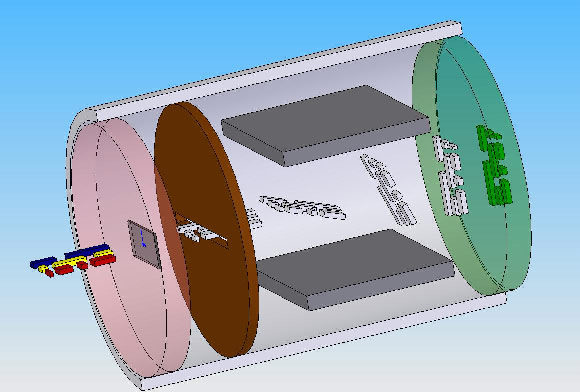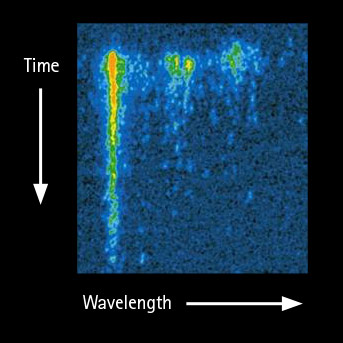What is a streak camera?
A streak camera is a unique tool that is used to measure the evolution of a linear image with very high time resolution. An ultrafast streak camera is the optical counterpart of the oscilloscope with a time bandwidth that can reach 2 THz. Its main component is a vacuum electron tube which integrates:


A 3-dimension image is obtained for a every optical pulse incident on the photocathode. The intensity of the signal collected on the screen corresponds to the intensity of the incident signal, the horizontal and vertical axis correspond respectively to the time and the position along the cathode.
In some applications, one can replace the spatial dimension by a spectral dimension by placing a spectrometer in front of the streak camera.
Time Units
NANOSECOND
1 nanosecond (ps) =10-9 second, or 1 billionth of a second.
In 1 picosecond, light travelling at 300 000 km/s, travels only 30 cm.
PICOSECOND
1 picosecond (ps) =10-12 second, or 1 millionth of 1 millionth of a second.
In 1 picosecond, light travelling at 300 000 km/s, travels only 0.3 mm.
FEMTOSECOND
1 femtosecond (fs) = 10-15 second, or 1 millionth of 1 billionth of a second.
